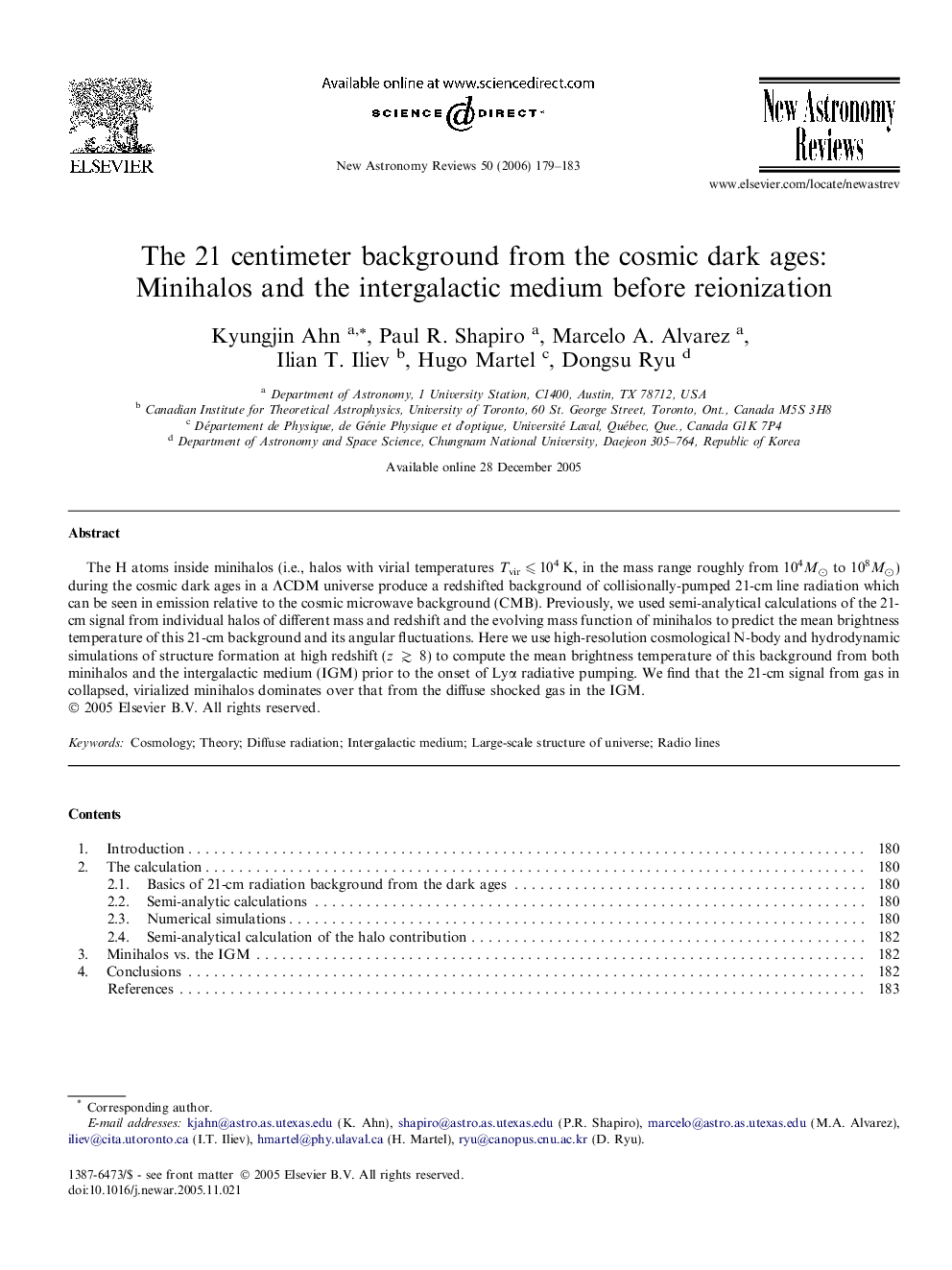| کد مقاله | کد نشریه | سال انتشار | مقاله انگلیسی | نسخه تمام متن |
|---|---|---|---|---|
| 1780428 | 1523807 | 2006 | 5 صفحه PDF | دانلود رایگان |

The H atoms inside minihalos (i.e., halos with virial temperatures Tvir ⩽ 104 K, in the mass range roughly from 104M⊙ to 108M⊙) during the cosmic dark ages in a ΛCDM universe produce a redshifted background of collisionally-pumped 21-cm line radiation which can be seen in emission relative to the cosmic microwave background (CMB). Previously, we used semi-analytical calculations of the 21-cm signal from individual halos of different mass and redshift and the evolving mass function of minihalos to predict the mean brightness temperature of this 21-cm background and its angular fluctuations. Here we use high-resolution cosmological N-body and hydrodynamic simulations of structure formation at high redshift (z ≳ 8) to compute the mean brightness temperature of this background from both minihalos and the intergalactic medium (IGM) prior to the onset of Lyα radiative pumping. We find that the 21-cm signal from gas in collapsed, virialized minihalos dominates over that from the diffuse shocked gas in the IGM.
Journal: New Astronomy Reviews - Volume 50, Issues 1–3, March 2006, Pages 179–183